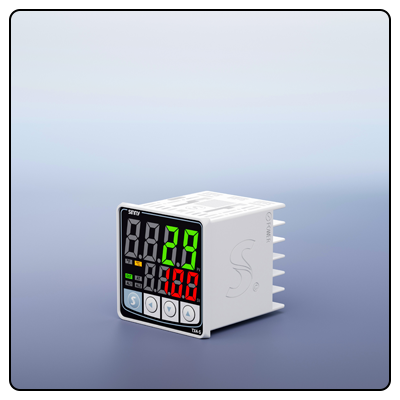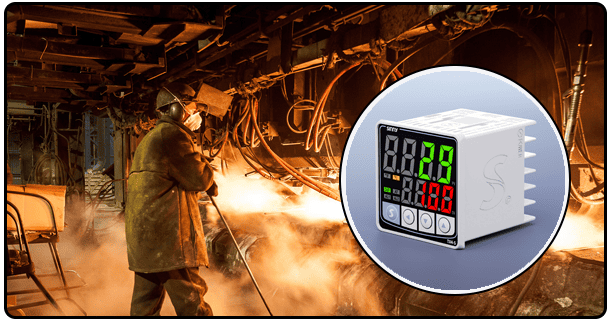Understanding Mold Temperature Controllers: Types, Applications, and Benefits
Learn about mold temperature controllers, their types, applications, and benefits. Discover how these devices improve product quality and production efficiency in manufacturing.
1. Introduction
Mold temperature controllers (MTC) are integral in manufacturing industries such as plastic injection molding and metal casting. Their primary purpose is regulating mold temperature for consistent product quality and maximum production efficiency; by controlling it precisely and regularly manufacturers can achieve repeatable and precise results that help produce high-quality production runs.
2. How It Works
Mold temperature controllers work by circulating heat transfer fluid such as water or oil through a mold and system components like heating units and cooling units as needed - heating increases fluid temperatures while the latter cools them back down as necessary; finally, temperature sensors continuously monitor mold temperatures allowing controllers to adjust heating or cooling accordingly for maintaining desired levels.
Starting off by heating or cooling fluid to its desired temperature, it is then circulated through channels in a mold for transference of heat transference between channels and mold material. Throughout production this ensures the mold maintains an appropriate temperature ensuring part quality with dimensions consistent over its entirety.
3. Types of Mold Temperature Controllers
There are two primary categories of mold temperature controllers - oil- and water-based models.
Water Mold Temperature Controllers
Water mold temperature controllers use water as the heat transfer medium. They're suitable for applications requiring lower to moderate temperature ranges (typically up to 90degC/194degF). Water provides efficient yet cost-effective heat transfer properties, making these temperature controls popular across industries and processes that involve rapid heating/cooling cycles.
Oil Mold Temperature Controllers
Oil mold temperature controllers utilize oil as the heat transfer medium, and are intended for higher temperature applications exceeding 150degC (302degF). Oil's higher boiling point helps it remain stable at elevated temperatures - ideal for processes requiring precise temperature regulation at elevated temps, such as metal casting and high-performance plastic molding processes.
4. Applications
Mold temperature controllers have many uses within manufacturing. Common examples are:
Plastic Injection Molding:
Ensuring consistent mold temperatures for high-quality plastic parts.
Metal Casting:
Ensuring mold temperatures stay at an appropriate level is vital in creating defect-free metal components.
Rubber Molding:
Rubber molded products require specific temperature conditions in order to cure uniformly, making their production possible. * Temperature Controlled Rubber Curing (TCRC) provides this facility.
Die Casting:
Die casting involves controlling mold temperature to optimize surface finish and mechanical properties of cast parts, improving their surface finish.
Controllers used across industries ranging from automobile, consumer electronics and aerospace production, through medical device production. Accurate mold temperature regulation is necessary in all these segments in order to meet product specifications and performance targets.
5. Benefits
The use of mold temperature controllers offers several significant benefits:
Improved Product Quality:
Consistent mold temperatures produce parts with uniform dimensions and properties, helping reduce defects while increasing quality overall.
Shortened Cycle Times:
Effective temperature regulation can significantly shorten heating and cooling cycles, thus increasing production speed and throughput.
Improved Production Efficiency:
By keeping mold temperatures within optimal limits, manufacturers can lower energy use and waste, ultimately leading to cost-savings and greater production efficiencies.
Extended Mold Lifespan:
Effective temperature management can lower thermal strain on molds, increasing their lifespan while simultaneously cutting maintenance costs and saving on maintenance fees.
6. Best Practices
For maximum benefits from mold temperature controllers, it is crucial that they adhere to best practices during their selection, installation and ongoing management. To do so successfully.
Regular Maintenance and Calibration:
Inspect and calibrate temperature sensors and control units regularly in order to maintain accurate temperature regulation, helping prevent deviations that could damage product quality.
Proper Selection:
Select an ideal mold temperature controller based on your manufacturing process's individual requirements such as its mold size, material and desired temperature range.
System Integration:
Integrating a mold temperature controller into other process control systems ensures seamless operation and monitoring, increasing production efficiency as well as quality. This can improve overall production efficiency.
7. Conclusion
Mold temperature controllers play a crucial role in modern manufacturing, enabling precise temperature regulation for various molding processes. By understanding their operation, types, applications, and benefits, manufacturers can make informed decisions to enhance their production capabilities. Implementing best practices in the use of these controllers ensures consistent product quality, reduced cycle times, and improved production efficiency.
- Understanding Digital Temperature Controllers: Types, Applications, and Benefits
- What is a PID Temperature Controller? | Comprehensive Guide























